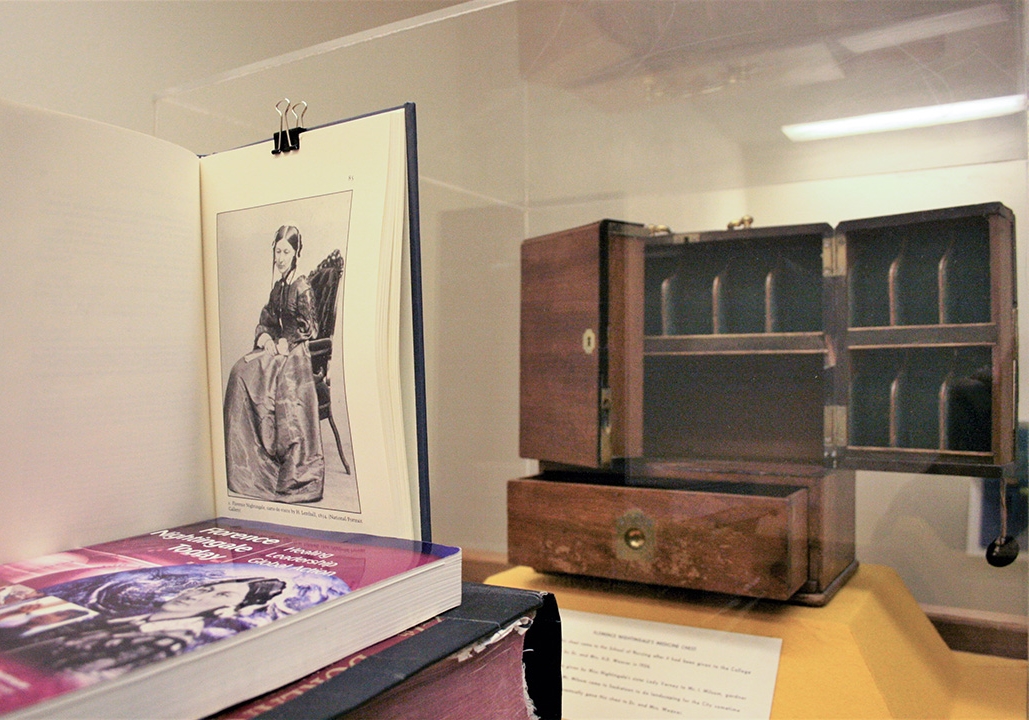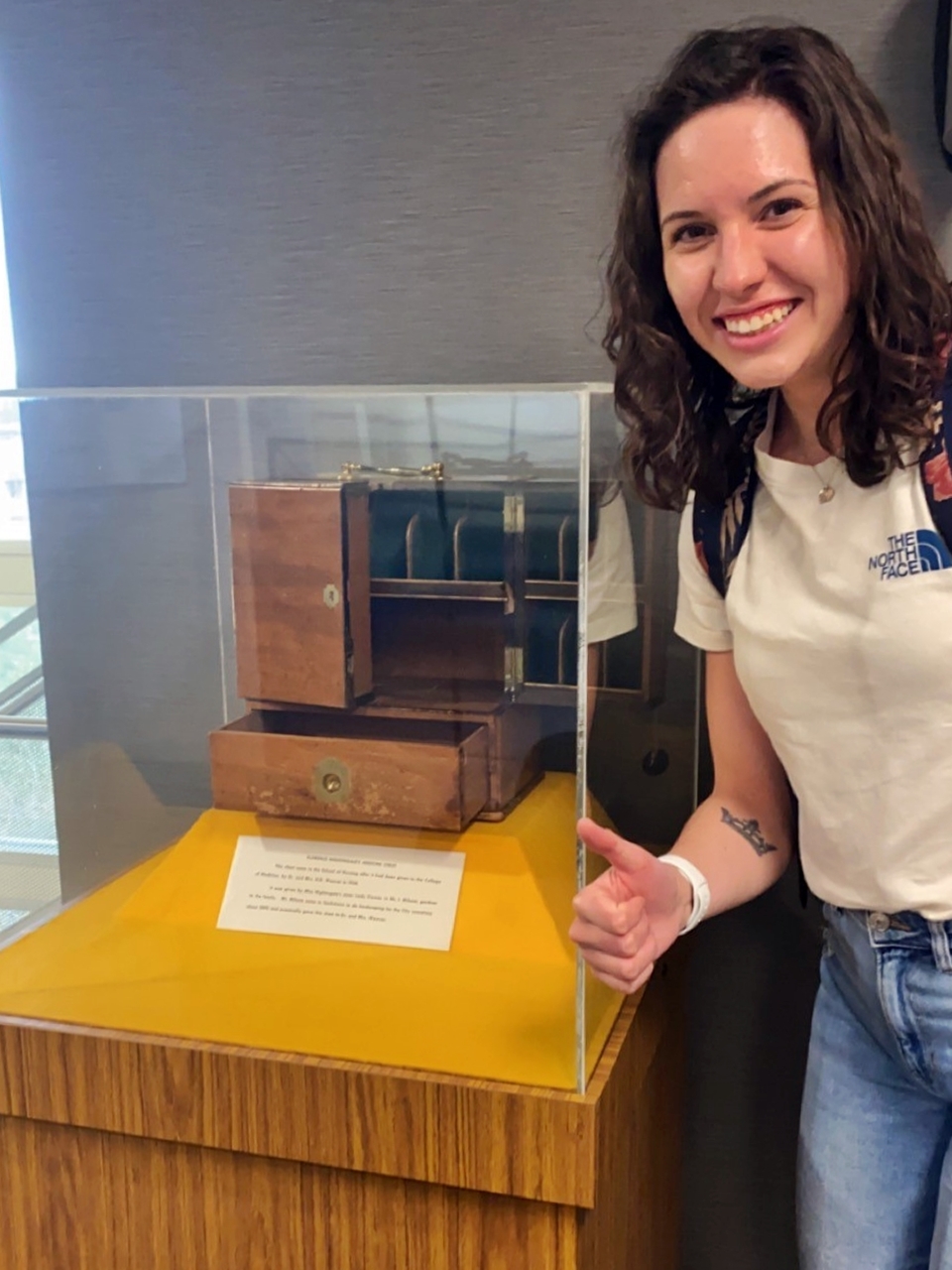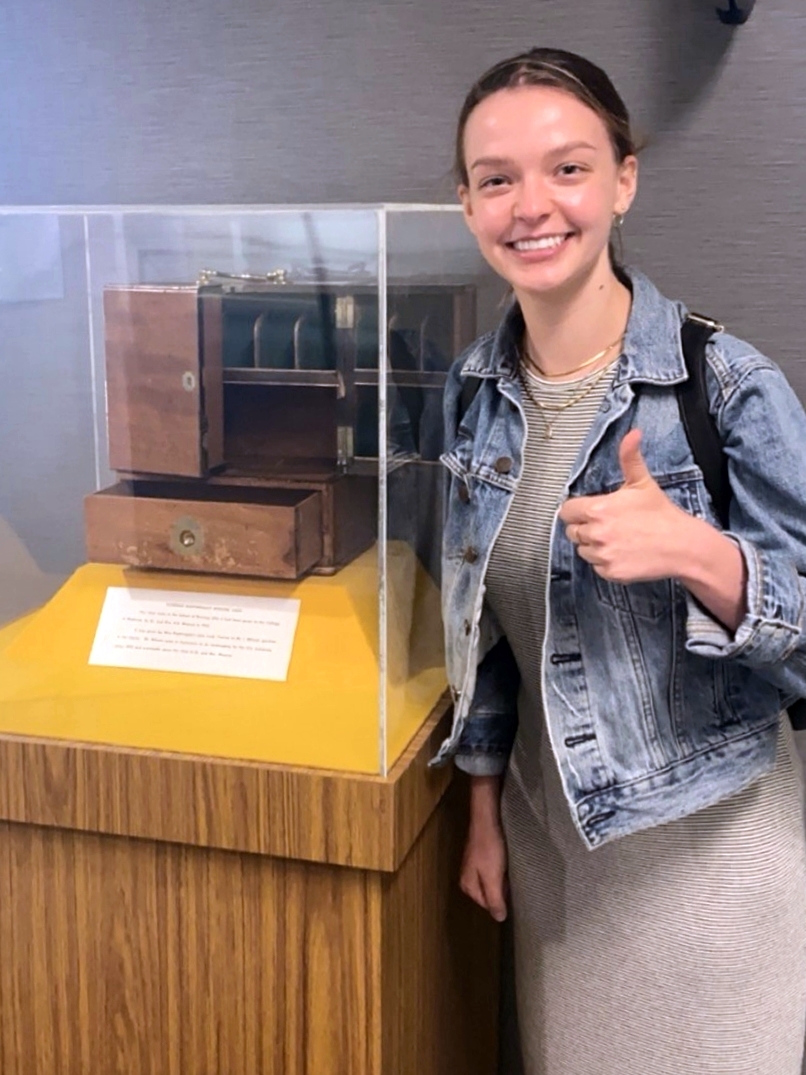
Florence Nightingale Medicine Chest
Historic medicine chest located at the University of Saskatchewan.
By Dr. Arlene Kent-Wilkinson (PhD)Did you know the University of Saskatchewan (USask) College of Nursing is home to the renowned Florence Nightingale Medicine Chest? Since arriving at USask in the mid-1950s, the Florence Nightingale Medicine Chest has been placed in a plexi-glass display case and over the years has been located in many USask libraries.
The medicine chest is currently located on the 4th floor, E-Wing, USask Health Sciences Building, between offices 4241 and 4242. The public is welcome to view the chest daily between the hours of 9 am and 4 pm.


(l to r) Current USask College of Nursing 3rd year students Kiandra Pennell and Ashlyn Froehlich check out the historical chest on May 6th.
College of Nursing associate professor Dr. Arlene Kent-Wilkinson (PhD) and assistant professor Dr. Helen Vandenberg (PhD) have initiated some research on the historical artifact. In May 2021, Kent-Wilkinson, published the article Where in the world is the Florence Nightingale medicine chest.
Florence Nightingale Medicine Chest Historical Timeline
- 1820
- Florence Nightingale was born in Florence, Italy, when her parents from England were there on extended vacation. Florence was named after the city where she was born.
- 1850s
- Florence Nightingale purchased at least two medicine chests in London, England.
- 1854 – 56
- Florence Nightingale took 38 volunteer nurses to the Crimea, along with medicine chest(s) for them to use in caring for wounded soldiers.
- 1890
- Lady Verney (Florence’s only sister) gave this medicine chest to her gardener: Mr. Isaac Milsom. Mr. & Mrs. Milsom were friends of the Nightingale sisters. Mr. Milsom was head gardener at Claydon House, where Lady Verney lived. Issac’s wife Mary Ellen Milsom was a close friend to Florence Nightingale, who was often at the estate in the summers.
- 1910
- Florence Nightingale passed away at age 90.
- 1912
- Isaac and Mary Ellen Milsom immigrated to Canada in 1912 with their six children and the Florence Nightingale Medicine Chest.
- 1914
- Isaac Milsom was hired to do landscaping for the City of Saskatoon. Soon after arriving in Saskatoon, Mr. Milsom met and became friends with Dr. Hugh Dalton Weaver, who was also originally from England.
- 1917
- Mary Ellen Milsom passed away (1863-1917). An article in the Saskatoon Daily Star revealed Mrs. Milsom had been highly educated at Trinity College in Dublin, Ireland and Oxford University in England, but had also had been an intimate friend of Florence Nightingale.
- 1918
- In 1918, after his wife passed away, Isaac went to Regina for a short time, then to Philadelphia, PA. Before he left Saskatoon, Mr. & Mrs. Milsom gave the medicine chest to their friends Dr. & Mrs. Hugh D. Weaver.
- 1940
- A Nurse’s Tea was held at the Hudson’s Bay Store in downtown Saskatoon. The event, attended by over 300 people, featured on display the Florence Nightingale Medicine Chest. Owners of the chest at that time were Dr. & Mrs. H. D. Weaver.
- 1950s
- Sometime around 1956, the medicine chest was donated by the Weaver estate to the University of Saskatchewan.
- 1989
- The Florence Nightingale Museum (FNM) opened in 1989 in London, England. The FNM features a medicine chest (or box) that is much smaller than the medicine chest in Canada.
- 2020
- Nursing Week in May 2020 celebrated 100 years since the birth of the founder of modern nursing Florence Nightingale.
- 2022
- The medicine chest has been in Canada for well over 100 years and for over 60 years at the University of Saskatchewan.

